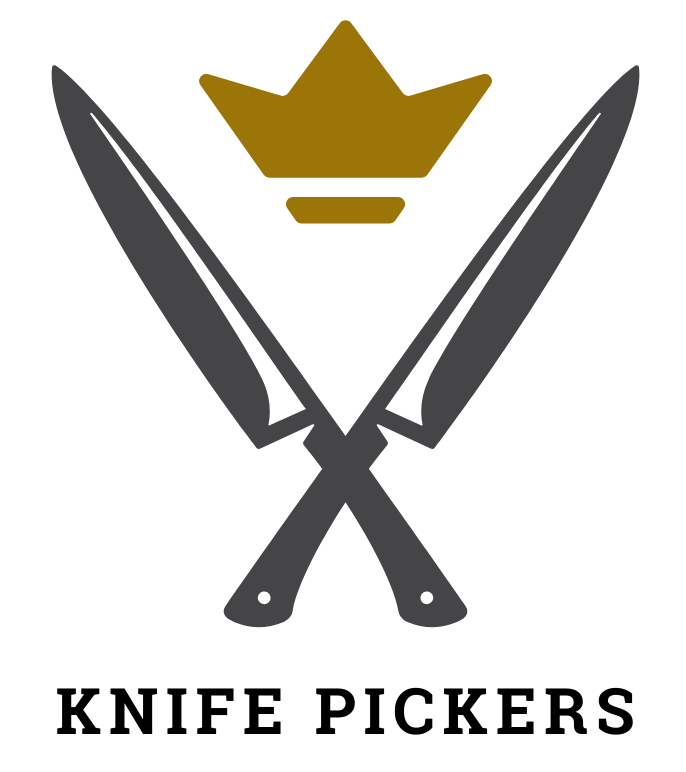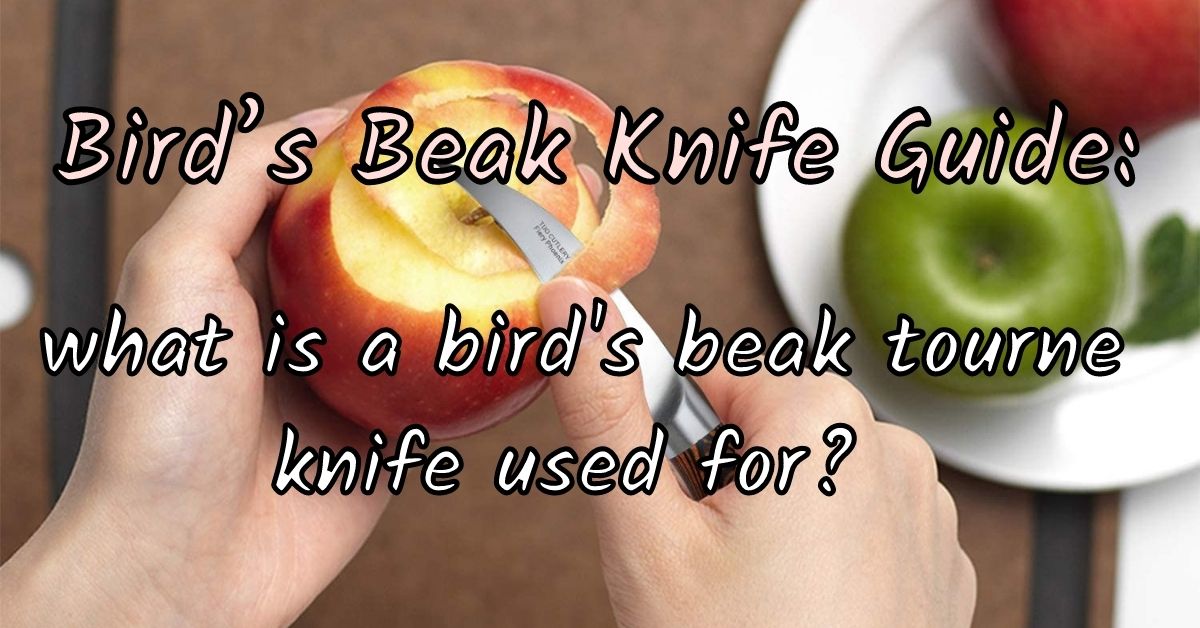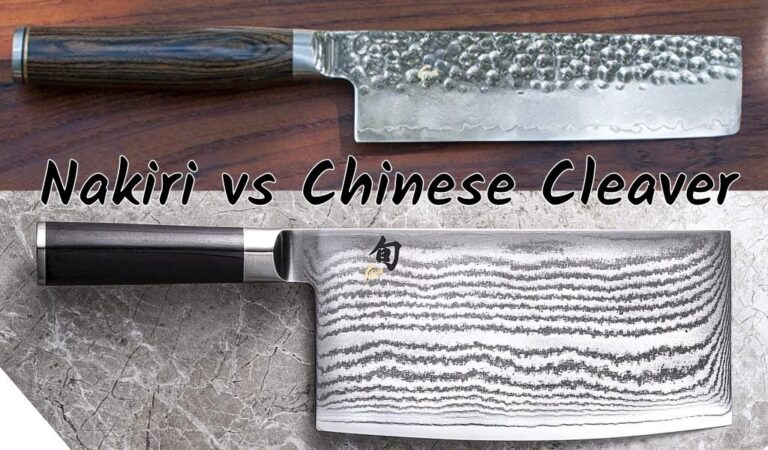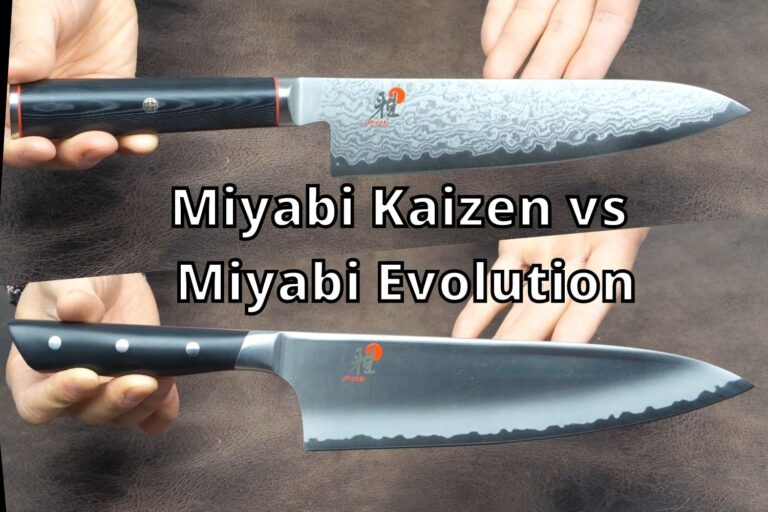A bird’s beak tourne knife is a great tool for any kitchen. It is a versatile knife that is an essential tool for any chef who wants to create beautiful and intricate dishes. In this article we will discuss about bird’s beak tourne knife, What is a bird’s beak tourne knife used for, and how to care and sharpen for a bird’s beak knife. We will also go through some of the best bird’s beak knives in this bird’s beak tourne knife guide.
What is a Bird’s Beak Tourne Knife?
A bird’s beak knife is a type of knife that has a curved blade that is designed to look like a bird’s beak.
A bird’s beak tourne knife is a type of knife used in French cuisine. It is named after the French word for “to turn,” because the knife is used to make a cut that turns the food as it is being cut. The bird’s beak tourne knife is a small knife with a curved blade that is used for peeling and slicing vegetables and fruits. These knives are also used for slicing and carving meats. Bird’s beak knives are usually made from high-carbon stainless steel or ceramic blade with a comfortable handle.
| Best Highend | Best Value | Best Affordable |
What is a bird’s beak knife used for? What is a tourne knife used for?
Before buying any kind of knife the first question that arrives in our mind is what are the uses of that knife? The same question may arrive in your mind while buying a bird’s beak tourne knife. what is a bird’s beak knife used for? What do you use a bird’s beak knife for? Or what is a tourne knife used for?
1. Peeling potatoes
A bird’s beak paring knife is an excellent tool for peeling potatoes. It is sharp and precise, making it easy to remove the thin skin of potatoes without taking off too much of the flesh.
To use a bird’s beak paring knife, simply hold the potato in one hand and the knife in the other. Rest the blade of the knife against the potato’s skin and slice downwards. The skin will peel away quickly, leaving you with a smooth and evenly peeled potato.
2. Peeling garlic, shallots, and onions
Using a bird’s beak tourne knife is a great way to quickly and easily peel garlic, shallots, and onions.
First, cut off one end of the garlic clove, shallot, or onion. Cut just enough to expose the flesh of the vegetable. Next, take your knife and insert the tip into the center of the vegetable. Apply pressure and twist the knife. This will loosen the skin and make it easier to peel. Finally, use your fingers to peel away the skin. You may need to apply
3. Peeling ginger
Yes, you can peel ginger easily with a bird’s beak paring knife. The curved blade of the knife is ideal for peeling the skin off of ginger without taking too much of the flesh with it. Be sure to wash the ginger well before peeling it, and then simply run the knife along the surface of the ginger to remove the skin.
4. Coring and Peeling tomatoes
You can use a bird’s beak paring knife to core and peel tomatoes. The bird’s beak shape of the knife makes it easy to maneuver around the tomato and remove the core and peel in one fell swoop.
Here’s how to do it:
- Cut a small X into the skin of the tomato with the tip of the knife.
- Insert the knife into the X and cut around the circumference of the tomato.
- Gently twist the tomato as you pull the knife out. The skin should peel away easily.
5. Peeling kohlrabi or celeriac
The bird’s beak tourne knife is the perfect tool for peeling kohlrabi or celeriac. Its sharp, curved blade makes it easy to peel the tough skin of these vegetables without wasting any of the edible flesh.
6. Peeling citruses, like lemons and oranges
You can use a bird’s beak knife for Removing long citrus peels to use as seasoning or cocktail garnishes.
This type of knife is named after the French word for “to turn,” because the blade is designed to rotate as it cuts. This motion makes it easier to peel the fruit in a circular motion, without having to apply too much pressure.
| Best Highend | Best Value | Best Affordable |
7. Trimming brussels sprouts, asparagus stalks, and artichoke stems
A bird’s beak tourne knife is the perfect tool for trimming brussels sprouts, artichoke stems, and asparagus stalks. This type of knife is designed with a curved blade that allows you to get a clean cut with minimal effort.
8. Slicing stone fruit (peaches and nectarines) and avocados on the pit
A tourne knife is a French-style knife that is ideal for slicing stone fruit and avocados. The blade is curved and has a sharp point, making it easy to maneuver around the pit of the fruit.
To use a tourne knife, first cut the fruit in half with a paring knife. Then, place the fruit on a cutting board with the pit facing up. Slice the fruit into thin wedges, angling the knife as you go.
Otherwise,, simply hold the fruit in one hand and the knife in the other. Place the blade of the knife at the top of the fruit and slice downwards in a smooth, even motion. For avocados, you will want to slice all the way around the pit. Then, using both hands, twist the fruit
9. Hulling strawberries
Hulling strawberries with a bird’s beak tourne knife is a great way to remove the stem and leaves from the fruit in one quick, easy motion. This type of knife is specially designed with a curved blade that is perfect for hulling strawberries (and other small fruits and vegetables).
First, wash your strawberries and remove any leaves or stems. Next, hold the strawberry in one hand and the knife in the other. Insert the tip of the knife into the top of the strawberry and twist the blade to Hull the fruit. Repeat with all of the strawberries. Enjoy!
10. Removing the eyes from pineapple and potatoes
You can remove the eyes from pineapple and potatoes with a bird’s beak tourne knife. This type of knife is specifically designed for removing the eyes from fruits and vegetables. It has a sharp, curved blade that is perfect for cutting around the small, round eyes of potatoes and pineapples.
11. Deveining shrimp
Deveining shrimp is a process of removing the black vein that runs along the back of the shrimp. This is typically done with a paring knife or a small, sharp knife called a bird’s beak knife.
The first step is to cut along the back of the shrimp, making sure not to cut too deeply. Then, using the tip of the knife, gently lift the vein and pull it out. Repeat this process with each shrimp.
What is the best bird’s beak tourne paring knife?
There is a wide range of bird’s beak paring knives in the market. But if you are looking for high quality and the best bird’s beak tourne knife then you can look for these three knives.
But if you want a detailed review, check this article: Best Bird’s Beak Knife Review.
| Best Highend | Best Value | Best Affordable |
How to use a bird’s beak paring knife?
A bird’s beak knife is a type of knife that is designed for precision work. It is often used by chefs and other professionals who need to be able to make precise cuts.
To use a bird’s beak knife, first, select the appropriate blade size for the task at hand. Then, hold the knife in your dominant hand and position the blade at a 45-degree angle to the cutting board. Apply gentle pressure to the blade to make the cut.
To use a bird’s beak knife, the user will need to hold the knife in their dominant hand and use their other hand to guide the blade. And The user should be careful.
How to sharpen a bird’s beak knife?
There are a few different ways to sharpen a bird’s beak knife, depending on what type of knife it is and what you have available.
If you have a sharpening stone, you can use that to sharpen the knife. First, find the angle you need to hold the knife at to create a sharp edge. This will be different for every knife, so you’ll need to experiment a bit to find the right angle. Once you’ve found the angle, hold the knife at that angle and run the blade along with the stone, moving from the hilt to the tip. Repeat this process.
If you can’t find a sharpening stone, you can use a piece of sandpaper instead.
Conclusion
If you have gone through this whole bird’s beak knife or tourne knife guide you must have got a clear knowledge aspect of this knife. I hope it is clear to you what is a bird’s beak knife used for and the caring and sharping process of this knife. Moreover, you also must have got an idea about some best and most high-end bird’s beak knives.







